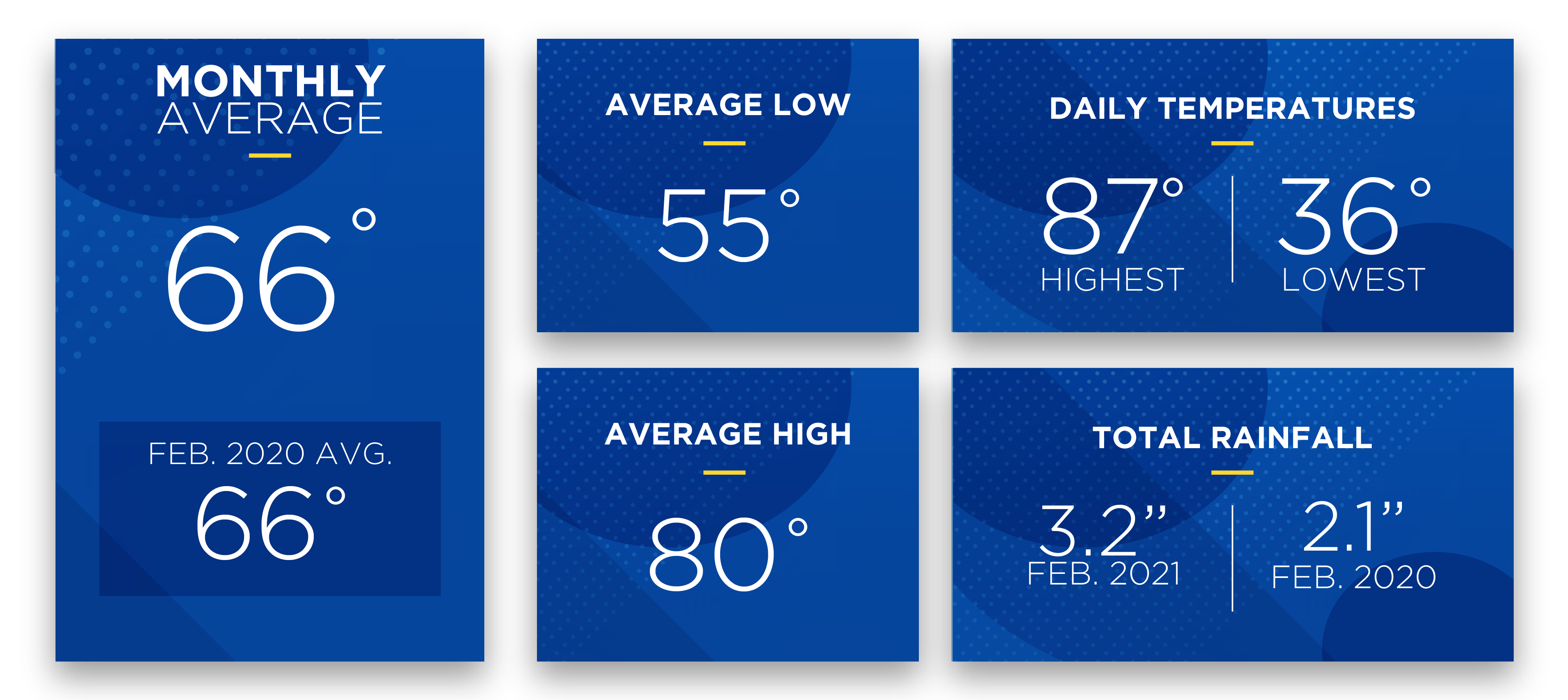February 2021 Sunshine State Stats
Central Florida weather in February 2021 included some of the lowest and highest temperatures of the 2020 – 2021 winter season. Residents donned heavy winter coats in the beginning of the month and flip-flops by month’s end. High temperatures reached 80 degrees or above 13 days in the month with low daily temperatures in the 30s and 40s. Members may notice an increase in their February electric usage due to heating and cooling needs during the month.
For February 2021 the average temperature was a comfortable 66 degrees, which is the same average temperature in February 2020. The highest recorded temperature was 87 degrees and the lowest recorded was 36 degrees. The average high temperature was 76 degrees, and the average low temperature was 55.
Average rainfall in February is just under 3 inches. February 2021 rainfall was higher than average at 3.2 inches for the month. In February 2020, rainfall measured lower at 2.1 inches.
Again, members may see an increase in their energy usage for February 2021. Daily temperature fluctuations mean members used their HVACs to cool their homes during the day and for heat after the sun went down. The highest daily temperature fluctuation was 30 degrees.
March forecast:
The March 2021 forecast boasts beautiful Florida spring weather with high temperatures in the upper 70s to mid 80s and low temperatures in the upper 50s to mid 60s. Expect mostly sunny days with the best chance for rain early in the month.
The Old Farmer’s Almanac predicts the average temperature for March will be 69 degrees, which is 2 degrees above average. Rainfall is expected to be slightly below average.
To check historical usage, log into SmartHub to view past bills and consumption charts. If your usage is high, SECO offers several energy-efficiency tools to help you identify energy wasters. Take the Home Energy Assessment to receive a detailed email tailored to your home’s features and lifestyle. The energy-saving advice will provide low-cost ways to decrease your usage – and your electric bill.
To easily calculate how much energy your appliances, lighting, electronic devices, and other energy-using items in your home consume, use the Energy Estimator.







